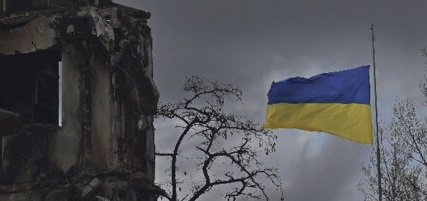
Where is the Path to Peace in Ukraine?
Does the path to peace run through stalemate or victory? This is among the key issues dividing analysts and policymakers in the West. (In Ukraine, there is no debate. Victory over Russia is seen as being the bare minimum necessary to restore peace). As hard as ending the war will be, an equally big challenge lies beyond: How can peace between Russia and its western neighbors be assured over the long term?
It seems intuitive that states will be most likely to make the compromises needed to lead to peace when there is no longer any prospect of winning on the battlefield. If one side still has hopes of winning on the battlefield, why would they negotiate peace? Stalemate also seems to offer a feasible pathway to peace: First, the front freezes because neither side can change it. Second, a cease-fire commits the sides to honoring the cease-fire line while negotiations take place. Eventually, one hopes, negotiations make the end to fighting permanent. A peace based on a stalemate also serves intuitive notions that see justice as based in compromise—neither side wins; both give something up. Supporters of Ukraine counter that a version of compromise that ratifies the fruits of naked aggression hardly seems either just or conducive to maintaining peace in the future.
A competing perspective sees stalemate as an obstacle to peace. War, in this view, persists because there is uncertainty over what will happen if it continues. As long as stalemate leaves both sides the hope of turning the tables, there is reason to seek a breakthrough. This characterized the western front in World War I from late 1914 until early 1918. Once the outcome can be predicted, however, the losing side has an incentive to cut its losses, while the winning side has an incentive to moderate its demands in order to limit the cost of the war. While this does not require the unconditional surrender of World War II, it does require it to be clear what will happen if the war continues. In World War I, a negotiated peace resulted not from the brutal stalemate of the trenches, but from US intervention and the collapse of the German army.
Moreover, much scholarship shows (though there remains debate) that peace based on victory lasts longer than peace based on compromise, and the fate of the Minsk agreements of 2014-2015 shows why. After Russia intervened in Ukraine in 2014, Ukraine accepted a very unfavorable cease-fire negotiated by European powers. Russia then seized more territory in early 2015, and Ukraine was compelled to sign a new version of Minsk acknowledging the new territorial reality. After seven more years of low-level conflict, Russia launched its massive invasion in 2022, and announced its goals of eliminating Ukraine as a state and embarking on a process of “de-Ukrainianization.” There is a big difference between a peace that endures and one that doesn’t, and a peace in Ukraine that doesn’t last could lead to an even more catastrophic war in the future.
An end to war based on stalemate and compromise necessarily involves commitments by states to refrain from certain behaviors in the future. Again, recent history does not encourage Ukraine or those who support it. In 1994, Russia, the US and UK signed the Budapest Memorandum, which, in return for Ukraine’s agreement to surrender the roughly 1,500 nuclear warheads it inherited from the Soviet Union, committed them to respecting Ukraine’s sovereignty and territorial integrity. It did not work out well for Ukraine.
One might hope that a compromise that left Russia in control of much of what it sought would satisfy Russia and pave the way to peace. Many thought that seizing Crimea would satisfy Russia in 2014, and then it intervened in eastern Ukraine; and many thought that it would be satisfied with its territorial gains there until the larger invasion of 2022. Now, Russia has claimed the rest of Ukrainian territory, and Russian law states that four Ukrainian regions, much of which Russia does not control, are a part of the Russian Federation. Any proposed end to the war must be evaluated in terms of how effectively it will prevent Russia from launching a new attack, grabbing some more territory, and pursuing a new cease-fire with even more Ukrainian territory under its control. It took three “partitions” to erase Poland from Europe’s map in the late 18th century, leaving Warsaw in the Russian empire (Putin lamented the loss of this empire in a speech last summer). Will a compromise that leaves Russia undefeated and in control of much of what it currently controls so satisfy Russia that it will not want to grab more in the future? Or will it open the door to future repetitions of a “grab, hold, negotiate” strategy? There is no guarantee that defeating Russia on the battlefield will either lead it to sign a peace agreement or to abide by it afterwards. But to believe that a “compromise” that leads to Putin declaring victory and retaining a new, larger chunk of Ukraine’s territory will bring peace to Ukraine is wishful thinking.
Latest Comments
Have your say!